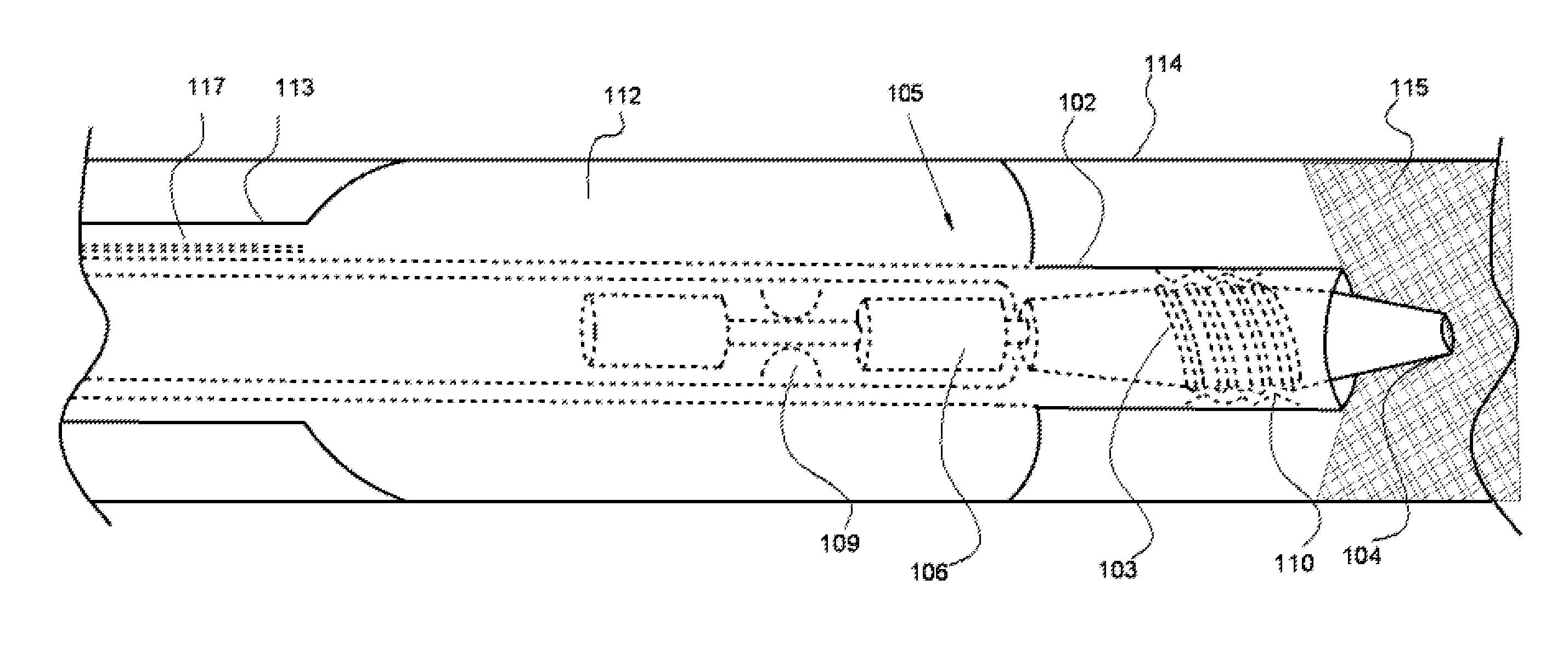System and Method for the Treatment of Occluded Vessels
a technology for occluded vessels and catheters, applied in medical science, veterinary instruments, excision instruments, etc., can solve the problems of life-threatening medical conditions, difficulty for clinicians to control the amount of force applied at the distal end of guidewires, and failure of conventional protocols, so as to prevent life-threatening embolizations, improve the success of crossing the lesion, and minimize the risk of perforation
- Summary
- Abstract
- Description
- Claims
- Application Information
AI Technical Summary
Benefits of technology
Problems solved by technology
Method used
Image
Examples
Embodiment Construction
[0039]In the present invention the term “occlusion” refers to partial and total occlusion located within any artery. The present invention comprises a centering catheter with two tubes, one within another, and a guidewire with a rotating distal end. The guidewire may be solid or hollow. For example, in an alternative embodiment, the guidewire is hollow and houses a filtration system to aspirate debris and return clean blood to the occlusion site. The guidewire comprises a rotatable body and a proximal shaft. The rotatable body has two components: a distal rotating head and a proximal rotating shaft, wherein these components are of equal length and the rotating shaft resides within the proximal shaft.
[0040]Guidewires are used by medical clinicians for a variety of invasive procedures, and thus vary in size and stiffness in accordance with the type of procedure. The guidewire of the present invention may be about 120 centimeters to about 300 centimeters long, with a length of about 14...
PUM
 Login to View More
Login to View More Abstract
Description
Claims
Application Information
 Login to View More
Login to View More - R&D
- Intellectual Property
- Life Sciences
- Materials
- Tech Scout
- Unparalleled Data Quality
- Higher Quality Content
- 60% Fewer Hallucinations
Browse by: Latest US Patents, China's latest patents, Technical Efficacy Thesaurus, Application Domain, Technology Topic, Popular Technical Reports.
© 2025 PatSnap. All rights reserved.Legal|Privacy policy|Modern Slavery Act Transparency Statement|Sitemap|About US| Contact US: help@patsnap.com



